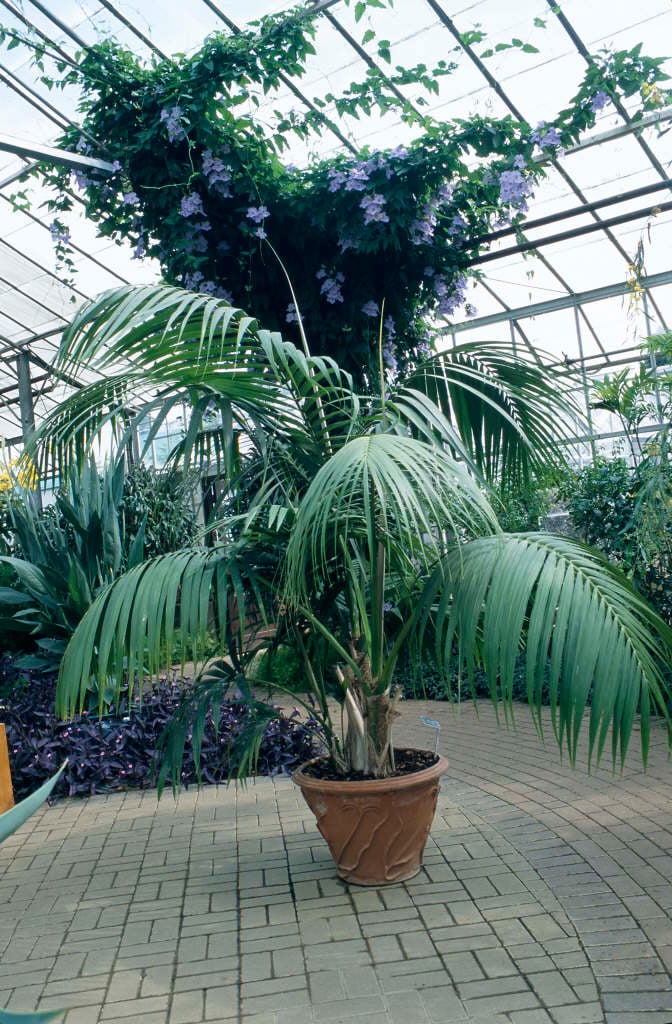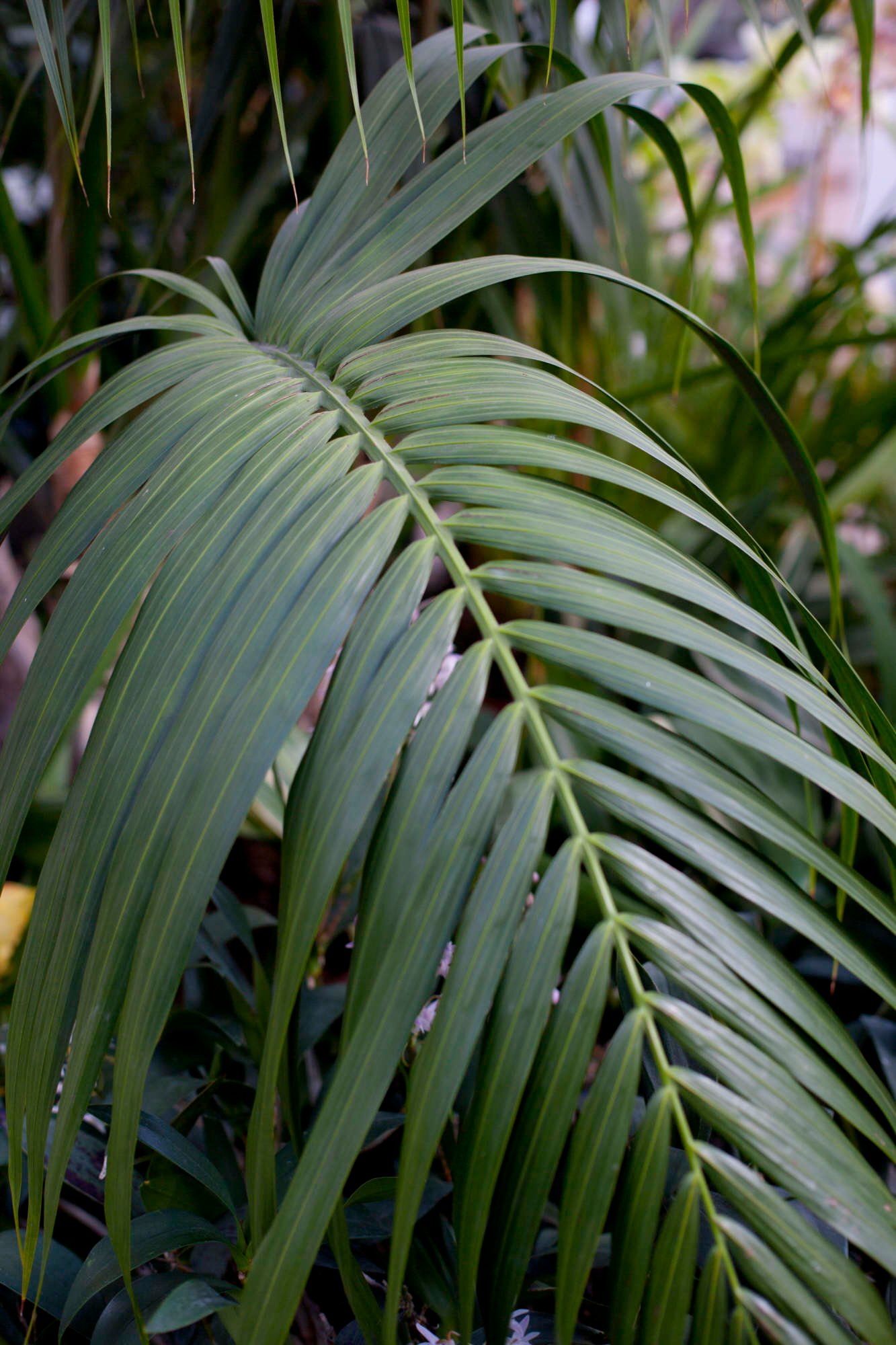Howea forsteriana
sentry palm
A single-stemmed evergreen palm to 2m in height, with dark green leaves to 1.5m in length, pinnately divided into several narrow segments. Flowers seldom produced under glass
Synonyms
Kentia forsterianaSize
Ultimate height
8–12 metresTime to ultimate height
20–50 yearsUltimate spread
4–8 metresGrowing conditions
Moisture
Well–drainedpH
Acid, NeutralColour & scent
| Stem | Flower | Foliage | Fruit | |
| Spring | Green | |||
|---|---|---|---|---|
| Summer | Brown Green | Green | ||
| Autumn | Green | Red Orange | ||
| Winter | Green |
Position
- Partial shade
Aspect
North–facing or East–facing
Exposure
Sheltered Hardiness
H1ABotanical details
- Family
- Arecaceae
- Native to GB / Ireland
- No
- Foliage
- Evergreen
- Habit
- Bushy
- Genus
Howea are evergreen palms with solitary stems bearing large, long-stalked, pinnate leaves composed of linear segments; with small star-shaped flowers borne in pendulous axillary clusters of spikes, followed by small oval fruits
- Name status
Correct
- Plant range
- Lord Howe Island
How to grow
Cultivation
Grow under glass in a peat-free, loam-based compost with equal parts added of composted bark and leaf mould, in bright light but with protection from the sun. Water moderately and provide moderate humidity when in growth and apply a liquid fertiliser monthly during the summer. Water sparingly in winter
Propagation
Propagate by seed sown at not less than 19°C
Suggested planting locations and garden types
- Architectural
- Patio and container plants
Pruning
No pruning required
Pests
May be susceptible to glasshouse red spider mite, thrips and scale insects
Diseases
Generally disease-free
Get involved
The Royal Horticultural Society is the UK’s leading gardening charity. We aim to enrich everyone’s life through plants, and make the UK a greener and more beautiful place.

